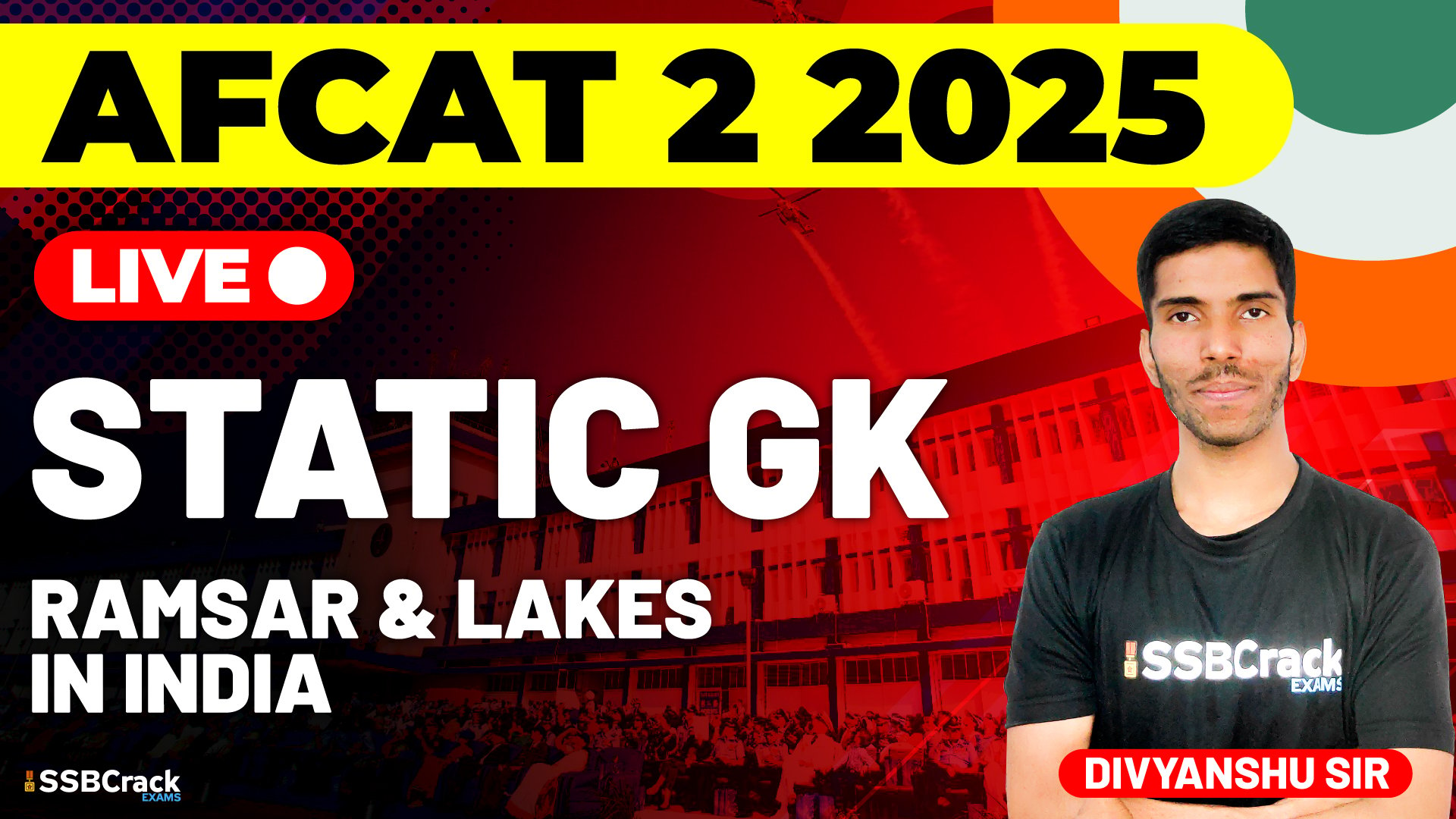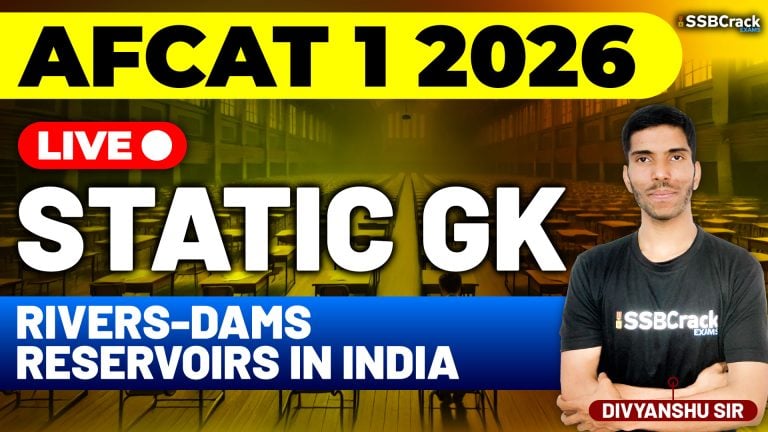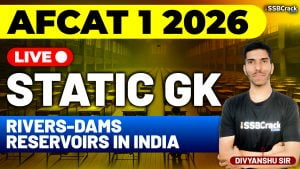The AFCAT (Air Force Common Admission Test) tests candidates on various subjects, and Static GK plays a significant role in scoring well. Among key static topics, Ramsar Sites and Important Lakes in India are frequently asked in exams. This article provides a concise overview of Ramsar wetlands and major lakes important for the AFCAT 2 2025 exam.
AFCAT 2 2025 Exam Static GK: Ramsar Sites & Lakes in India
🌍 What is a Ramsar Site?
- Ramsar Sites are wetlands of international importance designated under the Ramsar Convention, signed in 1971 at Ramsar, Iran.
- The main aim is conservation and wise use of wetlands to ensure sustainable development.
- India became a signatory in 1982.
🇮🇳 Ramsar Sites in India (As of 2025)
- Total Ramsar Sites in India: 89
- India has the highest number of Ramsar sites in Asia.
🔝 Top States with Most Ramsar Sites:
| State/UT | Number of Sites |
|---|---|
| Tamil Nadu | 14 |
| Uttar Pradesh | 10 |
| Punjab | 6 |
| Gujarat | 4 |
| Kerala | 4 |
📌 Important Ramsar Sites to Remember:
| Ramsar Site Name | State/UT | Key Feature |
|---|---|---|
| Keoladeo National Park | Rajasthan | UNESCO Site; Bird Sanctuary |
| Chilika Lake | Odisha | Largest brackish water lagoon in Asia |
| Wular Lake | Jammu & Kashmir | One of the largest freshwater lakes in Asia |
| Loktak Lake | Manipur | Only floating national park in the world |
| Sundarbans Wetland | West Bengal | Mangrove forest; home to Royal Bengal Tigers |
| Deepor Beel | Assam | Important bird area near Guwahati |
| Ashtamudi Lake | Kerala | Second largest lake in Kerala |
| Nalsarovar Bird Sanctuary | Gujarat | Large wetland; attracts migratory birds |
| Bhoj Wetlands | Madhya Pradesh | Near Bhopal; consists of Upper and Lower Lakes |
| Kolleru Lake | Andhra Pradesh | Between Godavari & Krishna deltas |
🏞️ Important Lakes in India (Non-Ramsar too):
| Lake Name | Location | Type/Feature |
|---|---|---|
| Dal Lake | Jammu & Kashmir | Urban lake; famous for houseboats |
| Vembanad Lake | Kerala | Longest lake in India |
| Sambhar Lake | Rajasthan | Largest inland salt lake in India |
| Pangong Tso | Ladakh | High-altitude brackish lake (India-China) |
| Pulicat Lake | Andhra Pradesh/TN | Second largest brackish water lake in India |
| Hussain Sagar | Telangana | Heart-shaped lake; connects Secunderabad |
| Tsomgo (Changu) Lake | Sikkim | Glacial lake; sacred to Sikkimese people |
| Lonar Lake | Maharashtra | Crater lake formed by meteor impact |
📝 Tips for AFCAT 2 2025 Aspirants:
- Revise the top 10 Ramsar sites and state-wise distribution.
- Link lakes with their types (brackish, freshwater, saltwater, etc.).
- Practice MCQs based on lakes and wetlands from the last 5 years.
- Use mnemonics or maps to remember locations easily.
📚 Sample Questions for Practice:
- Which of the following lakes is a Ramsar Site and the only floating national park in the world?
a) Dal Lake
b) Loktak Lake
c) Wular Lake
d) Sambhar Lake
Ans: b) Loktak Lake - Chilika Lake, a Ramsar Site, is located in which Indian state?
a) West Bengal
b) Odisha
c) Andhra Pradesh
d) Tamil Nadu
Ans: b) Odisha - Which is the largest inland saltwater lake in India?
a) Pulicat Lake
b) Kolleru Lake
c) Sambhar Lake
d) Vembanad Lake
Ans: c) Sambhar Lake
✅ Conclusion:
Ramsar Sites and lakes in India are important from both environmental and exam perspectives. For AFCAT 2 2025, knowing the location, type, and importance of major wetlands and lakes can help you score vital marks in the General Awareness section.
Stay consistent with your Static GK preparation and keep revising with maps, infographics, and quizzes.



















